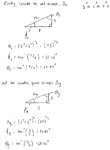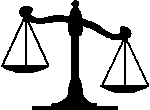firewalker99
Legendary member
- Messages
- 6,655
- Likes
- 613
its a weird one!
the orange block = 7 squares
light green block = 8 squares
green triangle = 5 squares ( (5 x 2) / 2)
red triangle = 12 squares ( (8 x 3) / 2)
total surface area = 7 + 8 + 5 + 12 = 32 squares
big triangle = 32.5!!! ( (13 x 5) / 2)
I dont understand how the big triangle surface area is 0.5 square bigger than the smaller pieces added together.
Am I making false assumptions about the surface area of the triangles? (Length x Height / 2) ??
Your calculations are all correct 🙂
I mean, your approach to determine the surface (lxh /2) is correct. But the big triangle can't be different in surface area from the sum of the others obviously, so something else must be causing this ...




